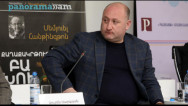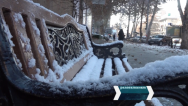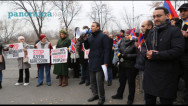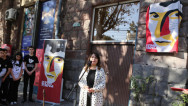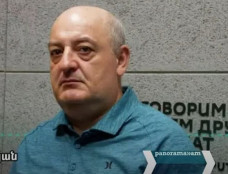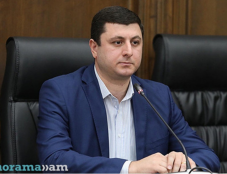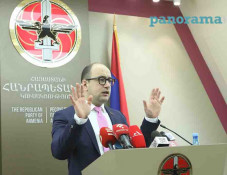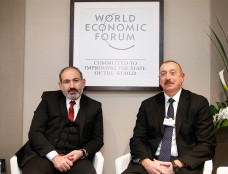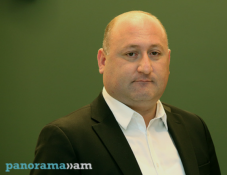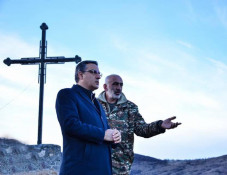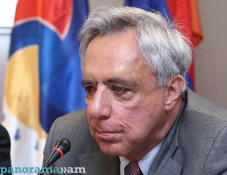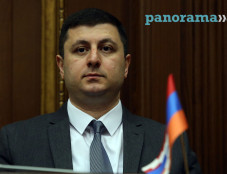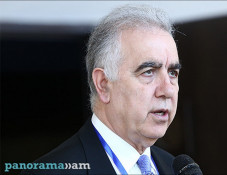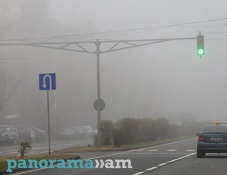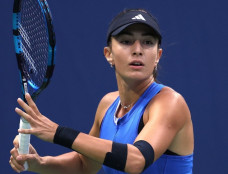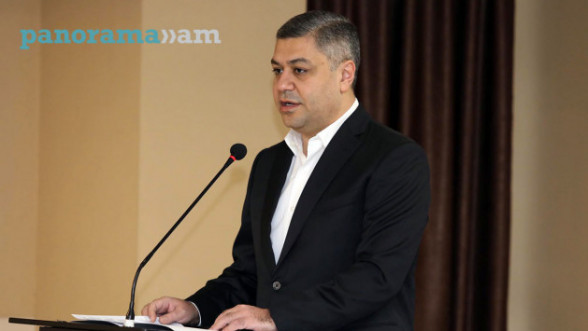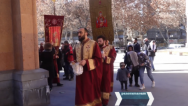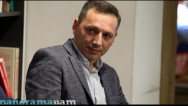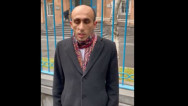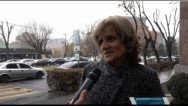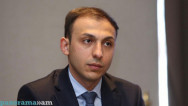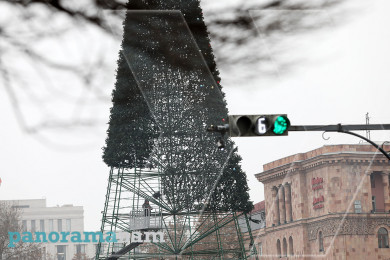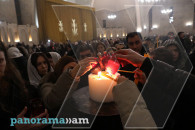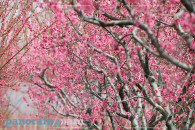
Artsakh’s Prospects for the Future
By Michael Mensoian
From The Armenian Weekly
Ever since the 1994 ceasefire brought a semblance of peace to Artsakh, its people have made great strides in democratic self-governance and in rebuilding and improving the economic and social infrastructure wantonly destroyed by Azerbaijan during the Karabagh War. During these difficult years the people have maintained a collective esprit and energy that confounds the Azeri leadership.
The ultimate concern, whether we live in Artsakh or beyond, is the future viability of this historic Armenian land liberated through the heroic efforts of its people. There are several questions that must be affirmatively answered: Would Artsakh (and Armenia) be able to withstand renewed hostilities by Azerbaijan? Can Artsakh’s interests be protected through negotiations? Does Artsakh have the resources to develop a robust economy, not only for its present population, but as a future frontier beckoning Diasporan Armenians wishing to return home?
Confronting renewed hostilities
Any number of reasons would—or should—deter Azerbaijan from renewing hostilities; if they did not exist, President Ilham Aliyev would have already exercised his oft-threatened military option. Yet, there is always the possibility that internal pressures or his outsized ego could override prudent judgment. This analysis will only consider the military strategy that Azerbaijan is likely to adopt if it were to resume hostilities, and the difficulties that a tactical implementation of that strategy would involve. Given these apparent difficulties, one might question why the strategy would even be considered. It is based primarily on the reality that the international community, and especially the neighboring countries, would not tolerate a protracted war. This reality requires a strategy that would (1) seek to occupy strategic objectives within a window of opportunity of from 12-15 days; (2) seek to breach the heavily fortified frontier, preferably at both Agdam and Fizuli, within the first 48-72 hours; (3) engage the defenders along the entire front (the Northern, Central, and Southern Sectors); and (4) require the deployment of all 3 army corps, or significant elements thereof, currently positioned along the Armenian-Artsakh border from Georgia to Iran.
Presently Azerbaijan has five army corps in the field. The first Army Corps is concentrated in the vicinity of Ganja. It is responsible for the Northern Sector and the Armenian frontier. The third is stationed in the vicinity of Barda (Central Sector), and the second in the vicinity of Agdzhabedi/Beylagan (Southern Sector). The second also has responsibility for the Iranian frontier. The fourth Army Corps is stationed in the capital district of Baku, and the fifth is deployed in Nakhitchevan.
Yusif Agayev, an Azeri military expert who fought in the Karabagh War, doesn’t believe “…the society of my country is ready for war. I think it would be a month or two. That is the amount of time the armed forces could fight for. If it drags on longer, then it will be a war that society will have to participate in, not just the army.” It is not likely that Azerbaijan will have the month or two that Agayev suggests. A window of opportunity of about 12-15 days would be more likely. That is why the first 48-72 hours is so critical. Within minutes of the first shot being fired there would be an international demand for a ceasefire led by Russia, Iran, Georgia, and possibly Turkey supported by Western Europe and the United States (covertly backed by international oil interests). Given the observable signs of an Azeri offensive build-up, these nations would not wait for the first shot to be fired before diplomatic pressure is applied. Although the conflict occupies a limited geographic area, its ramifications—the ‘unintended consequences’—could easily destabilize the entire region. Russia, Iran, Georgia, and Turkey each have ethnic minorities with long-standing socio-economic and political grievances who seek either independence or effective local autonomy. This conflict could be the spark that ignites this historic geographic tinderbox.
Since Azerbaijan realizes a protracted war is not viable, the strategy is to engage the Armenian defenders along the entire frontier. This can only be accomplished by simultaneously committing elements of the three army corps responsible for monitoring the Artsakh border. Given this strategy, the obvious objectives would be Agdam and Fizuli. To support these two major offensives, units of the second and third corps would engage the Armenian defenders in such tactical movements as holding actions to deny the redeployment of Armenian units to critical sectors of the front; diversionary maneuvers that seek to mislead or confuse the defenders; and diversionary attacks that would seek to relieve the pressure on the main forces attacking Agdam and Fizuli.
Diversionary attacks from Tartar toward Mardakert would relieve the pressure on the Agdam forces as well as protect their northern or right flank. At the same time a diversionary attack toward Martuni by elements of the second Army Corps would assist the main force attacking Fizuli and protect their eastern or right flank. The first Army Corps at Ganja would most likely engage in diversionary maneuvers and hold actions along the mountainous Northern Sector. Depending on the resistance encountered, the Azeris could commit elements of the first to a full-scale diversionary attack from Shahumian toward Mardakert.
The former United States ambassador to Azerbaijan, Matthew Bryza, has suggested that “the Azeris can’t retake Artsakh now. They are militarily incapable of doing it.” He further suggested that he “…didn’t think they could dislodge the Armenian forces from the high ground. Wayne Merry, a Senior Fellow at the American Foreign Policy Council, agrees, saying that “a key factor is the topography, the extent to which Nagorno-Karabagh has created defenses in depth. Progress would come at a high cost.”
In addition to controlling the high ground, the Armenian defenders have had nearly 20 years to develop fortifications in depth, as well as construct obstacles that would impede and channel men and mechanized equipment into prepared fields of fire. To achieve the quick breakthrough required, the Azeris would seek to overwhelm the defenders by deploying a numerically superior concentration of infantry and mechanized units. Against heavily fortified positions a disproportionate ratio of perhaps four to five Azeri casualties to one Armenian casualty could be expected. These excessive battlefield losses would have a demoralizing impact on the Azeri units, keeping in mind that possibly 7 out of 10 men are either 12- or 18-month conscripts in addition to reservists who might be called-up to augment the professional army. Loss of morale would have a debilitating impact on unit effectiveness, which would contribute to an increased casualty count. Every tactical plan is dependent on an integrated hierarchy of units from squad, platoon, on up, with each unit supporting the mission of the next higher command, which could be a reinforced company or a brigade. All units involved must operate as one cohesive force with one overriding objective to have any chance of success.
Engaging the Armenians along the entire front is sound strategy given the realities of the situation, but it is also a catch-22 situation. A phased deployment of units would favor the defenders, while committing significant elements of its three army corps simultaneously in a tactical bid to overwhelm them before an expected ceasefire can be enforced is no guarantee of success, and would most likely result in unacceptable losses in men and equipment. It is highly unlikely that the civilian population (if aware of the losses) or the field commanders (senior officers) who must follow orders would tolerate such losses.
The prize Azeri objective would be Agdam. To the east of Agdam is the Kura River floodplain, part of which is below sea level (the Kura River empties into the Caspian Sea, which is about 90 feet below sea level). From this floodplain the elevation rises westward in a step-like fashion to the high plains just west of Agdam (which is about 1,200 feet above sea level) that give way to the hillier terrain toward Stepanakert. If Agdam is occupied, it would allow the Azeri forces to spill out onto this plain, thereby facilitating the increased deployment of mechanized equipment such as tanks, armored troop carriers, self-propelled artillery, and rocket launchers for a final push toward Stepanakert and Shushi, with a smaller force moving south to join the attack on Martuni.
To the south, a second major offensive would be underway toward Fizuli. A diversionary attack on Martuni would seek to ease the pressure on the Fizuli force as well as protect its eastern or right flank. Holding actions at Hadrut would protect the western or left flank of the Fizuli force. If Fizuli were to be occupied, the main force would most likely split with the larger force wheeling eastward toward Martuni. Should this happen, the Martuni defenders would face a three-pronged enveloping maneuver that would either force them to fall back or be cut off from the main Armenian forces (assuming the Azeri offensive could succeed).
The second smaller force would augment the Azeri units engaged at Hadrut. If Martuni were occupied, the combined Azeri forces would then move toward Shushi/Stepanakert from the southeast to support the Agdam forces attacking from the northeast. The Azeri Hadrut units would be given the mission to protect the western or left flank of this final thrust toward Artsakh’s core area.
While this might be the essence of the Azeri strategy, its success is far from assured; the deterrents are many. First and foremost, this analysis does not consider the defensive and offensive capabilities of the Armenian forces, who have played out the various strategies the Azeris might adopt. An instant problem for the Azeris is the recognition by unbiased observers that the Armenian military force is much better prepared. Also it is unlikely that the Azeri soldier has the emotional and psychological stamina or determination of the Armenian soldier, who is prepared to fight for his family, his land, his children’s future, and for his right to live as an Armenian. What reasons would the Azeri soldier have to sacrifice his life in a war he might neither accept nor understand?
It is the expected immediate international call for a ceasefire that would require Azerbaijan’s massive deployment of men and equipment in a military gamble that seeks to overwhelm the defenders and breach their fortifications. It is this tactical decision that could result in extremely high battlefield losses against a determined, entrenched defensive force. It is not possible for Azerbaijan to gain any advantage from a surprise attack because the intelligence gathering technology available to the Armenian military allows for the real-time gathering of information. This intelligence effort is likely aided by Russian input and, during a conflict, possibly by covert Iranian input.
Every strategic target within Azerbaijan is within the effective retaliatory capability of the Armenian defenders. Pre-selected targets would be engaged immediately, some of which may have a devastating impact on Azerbaijan’s war effort. So much emphasis has been placed on the publicized expansion of its army that it is accepted as doctrine that numerical superiority in men, which is not the same as the principle of force concentration (achieving numerical superiority at a given time at a given place), is the key element on the battlefield. It is not! The Armenian defenders have the ability to achieve force concentration to gain a tactical advantage at any sector of the front based on their shorter interior lines of communication that facilitate the rapid deployment of troops and equipment. In addition, a defending force occupying heavily fortified positions may have a ratio of three- or four- to one advantage over the attacking forces: The Azeri staging areas where units are readied for movement to the front; their approaches to the line of contact; as well as their supply and resupply routes, are all vulnerable to effective Armenian counter-measures.
Adding to the deterrents is the sophisticated level of planning, coordination, and execution required and the real-time evaluation and response to evolving situations at the fronts that may require immediate tactical changes; the augmentation or redeployment of units; resupply; and the evacuation of battlefield casualties. It is highly problematic if the Azeri military command has this capability at the level required. Some of the officers and a smaller number of non-commissioned officers (NCO) may be veterans of the Karabagh War. Assuming the publicized expansion of the army is accurate, most of the junior officers (captain and below) who fill the majority of the combat slots in any unit, as well as the NCO’s, may well be the weak link in the Azeri command structure in terms of training, leadership, and indoctrination. A resumption of hostilities is not likely to provide President Aliyev the solution he seeks.
Can negotiations protect Artsakh’s interests?
The principles advanced by the Minsk Group (represented by Russia, France, and the United States) to guide the negotiations, no matter how nuanced they have been over time, continually stress (1) the inviolability of Azerbaijan’s territorial integrity and (2) that when and how Artsakh’s final status is determined, it will be no better than limited autonomy under Azerbaijan’s jurisdiction. This raises an important question: If Artsakh had the legal right to declare its independence under the principles of remedial cessation or self-determination, or under the laws of the soviet constitution, the negotiators, including the Artsakh representatives, should be discussing the timing of Artsakh’s recognition; indemnification for displaced people/refugees (both Armenian and Azeri); its final boundaries; and the status of Shahumian, and the occupied border areas of Mardakert and Martuni. It may be difficult to accept, but some adjustments in the area to be included in Artsakh may have to be considered. An offer giving Azeris married to Armenians (possibly including their extended families) the right of return to Artsakh might also be considered.
Azerbaijan continues to claim that its territorial integrity is being violated by Armenia. This is a specious argument ostensibly supported by the Minsk Group. Azerbaijan is purposely misinterpreting Principle 4 under Chapter 2, Article 1 of the Charter of the United Nations, which prevents a state from threatening the territorial integrity of a neighboring state. It is the Artsakh Armenians who threatened the territorial integrity of Azerbaijan by having legally declared their independence. However, Principle 4 does not apply to Artsakh. Armenia’s intervention was limited to providing humanitarian and military assistance to protect a beleaguered population from the indiscriminate use of military force by the Azeris. The present Armenian presence in Artsakh represents a stabilizing influence that facilitates the recovery effort and a preventive measure against a renewal of hostilities.
Economic development
Artsakh’s natural resource base is more than adequate to support at least 10 times its present population of approximately 140,000. However, several interrelated factors—a reverse domino effect—represent serious obstacles that must be addressed before a robust economy can develop. The most obvious are (1) Artsakh’s tenuous political status, which (2) inhibits foreign investment, which (3) discourages in-migration.
Tenuous political status
Artsakh declared its independence in 1991 and has, since the 1994 ceasefire, met all of the “unofficial” requirements for de jure recognition. (Unfortunately, recognition is a highly subjective political decision.) Until recognition is granted, it is vital that Artsakh continue to invite foreign government leaders, as it did recently with Uruguayan parliamentarians. While recognition will not come solely or immediately from these visits, they will lay the groundwork as well as the perception that recognition is highly likely to occur. It is an important first step (which Stepanakert already recognizes) if investment is to be encouraged. Dependence on the level of aid presently received is not adequate to stimulate a robust economy that can independently sustain Artsakh. However, this aid has made significant improvements in basic infrastructure that has improved the quality of life for the people—the foundation upon which Artsakh’s future will be built.
To facilitate this process Artsakh must continue to expand its public relations effort through the various political, humanitarian, and philanthropic organizations that are already committed to its cause. Without getting into the political aspects of the Artsakh issue, its long-term viability should represent the most significant issue on the Armenian national agenda. The more the Armenian Diaspora know about Artsakh—its achievements and potential—the greater its response to aid in Artsakh’s development.
Measured population increase
Increasing the population should go hand-in-hand with economic development. However what is required and doable is a measured increase in population as a means to meet political and economic needs. Politically it is difficult to claim “empty” lands however justified that claim may be when the lands are not reasonably integrated with the core area. We should have learned from the Turkish inspired genocide that emptied historic western Armenia of our people to weaken if not eliminate potential territorial claims by Armenia. A program of selective immigration would seek to meet the political and economic objectives identified by a government master plan for strategic resettlement. (See “The Strategic Resettlement of Artsakh,” The Armenian Weekly, February 19, 2011) Stepanakert must be prepared to effectively assist these newcomers to Artsakh. It cannot be expected that these 21st century Armenians are pioneers able or willing to “tame” the wilderness. That type of settlement program is a prescription for disaster.
As Stepanakert increases its connections with various organizations and institutions beyond its borders; as it cultivates relations with foreign governments; and as the world community (including our Diaspora) are given reasons to support Artsakh, an aura of inevitability with respect to recognition will encourage greater interest from foreign investors, including Armenians. Although Artsakh has already benefited from visionary diasporan entrepreneurs, de jure recognition is essential to open the floodgate for foreign investment
Renewable energy sources
Present available data for Nagorno-Karabagh indicate a significant potential for the development of renewable energy. This is important given the absence of carboniferous energy resources. Several sites in the vicinity of Jermajur and Vaghuhas in the north and in the Stepanakert-Shushi region have been identified as “most appropriate” for constructing wind turbines to generate electric power. Other secondary sites exist, as well as sites in Kashatagh that have yet to be fully evaluated.
The region receives an average of about 23 inches of precipitation annually which is sufficient for agriculture supplemented by irrigation if or when necessary. Precipitation generally increases from the south/southeast toward the higher elevations to the north/northwest. In the Kashatagh Region precipitation increases north toward the Eastern Sevan/Mrav Mountains. Surface flow and the many deep narrow valleys provide sites that may be used to construct dams for water storage, hydroelectric generation and irrigation as well as preventing floods from the annual Spring snow melt from the higher elevations that dominate the north and northwestern portions of Artsakh. The average precipitation would suggest a greater proportion of days with less than one/quarter of the sky covered by clouds. This would result in more hours of daily sunlight which would facilitate the development of solar power. Renewable energy would be a boon for the remote villages which could draw upon locally produced energy. In addition Artsakh’s balance of payments situation would benefit by eliminating or reducing payments for energy imports.
Potential sectors of the economy
Artsakh’s farmers should be able to produce a wide variety of field and tree crops (including viti culture). Some specialized products would include processed and comb honey, a variety of berries, nuts, and fresh-cut flowers. Natural and upgraded pastures could support commercial dairy farming including poultry and egg production, cattle and sheep rearing and hog raising. In addition, the by-products associated with each animal are able to support a variety of economic activities. A recent trade report cited the shortage of pork production in China (a potential market). Given present technology, a hog carcass in Artsakh can be deboned and cut-up to reduce its weight and bulk, flash frozen, vacuumed sealed in ‘cryovac’ and boxed to be economically air lifted to a foreign market. Historically the region was home to the Karabagh horse. No reason why rearing horses could not be reintroduced on a much larger scale.
Given the emphasis on the agricultural sector the processing industry could be an important source for exports. In North America there are significant nodes of Armenian population–Boston, New York, Philadelphia, DC, Los Angeles, Montreal, and Toronto–that could be developed as markets for some of Artsakh’s products including wine, vodka, brandy, bottled water and beer. This would require appropriate advertising and maintaining trade representatives possibly in New York and Los Angeles. These markets could also serve as conduits to introduce Artsakh’s products to a wider geographic area and a larger population. If the Stepanakert International Airport could become operational, it would be a significant political and economic triumph that would give Artsakh the potential for direct links to the world. Is it no wonder that Azerbaijan is so vehement in its opposition.
Artsakh’s forests could support an important domestic construction materials industry which would include such products as dimension lumber and timbers, composition board, specialty wood products, and roofing materials as well as furniture manufacturing. This could be augmented by quarrying for building stone, sand and gravel, limestone for cement, and the manufacturing of ceramics and glass. Given its resource base and an educated workforce, Artsakh has many options to pursue in developing a viable economy including an expansion of its incipient information technology industry.
Finally, Artsakh’s history, its ancient structures, archeological sites, breath-taking scenery, and mineral springs are ideal for tourism. Not to be overlooked are the gracious, friendly people and the cuisine. Tourism is a means for visitors, diasporan Armenians included, to become acquainted with the people and their country. Tourism is a catalyst that generates the need for better roads, transport facilities, lodgings, publications, a multitude of support services, a wide range of goods to meet the needs of the tourists, and most importantly, occupational opportunities. Although tourism does not generate high paying jobs, it does provide valuable experiences for first time employees to learn various skills as a way to move up the employment ladder. It is also a means to improve the balance of payments situation.
Several years ago I wrote an article entitled, “Artsakh: The Key to Armenia’s Political and Economic Future” (The Armenian Weekly, January 2010 Special Magazine Issue). Three years later I am even more bullish on Artsakh’s prospects after having witnessed the tremendous progress its people have made. Artsakh is a land of unlimited opportunity that can and will become our nation’s future frontier beckoning Armenians to return home to participate in rebuilding an ancient land that has been reborn.
Newsfeed
Videos
